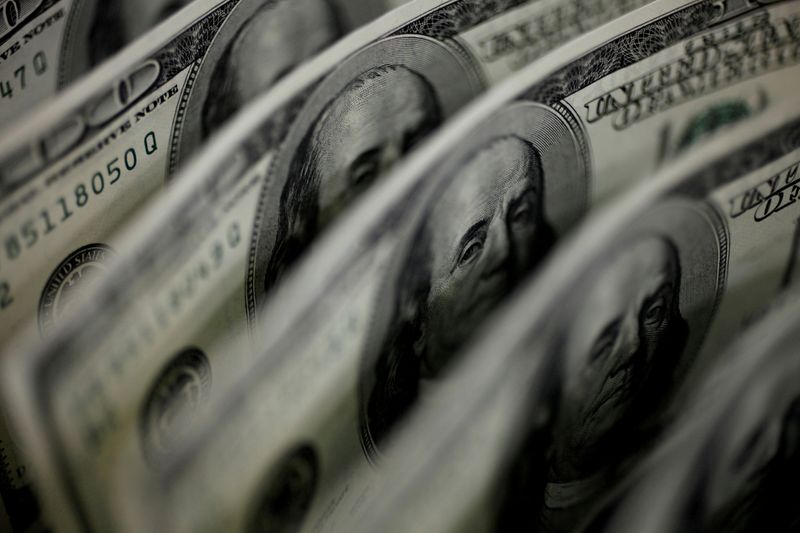By Ritvik Carvalho
LONDON (Reuters) - The dollar clung to minor gains on Wednesday, edging up from near a five-month trough versus major peers, as a pick up in U.S. manufacturing kept bets alive for a quicker normalisation of Federal Reserve policy.
The dollar index, which measures the greenback against six rivals, hovered just below 90 after dipping to as low as 89.662 on Tuesday and approaching the lowest since Jan. 7 at 89.533.
The euro traded at $1.22 after pulling back from near a multi-month top overnight, when it climbed to $1.22545.
Investors were also eyeing the trajectory of China's recently bullish yuan. It was little changed at 6.3823 per dollar in offshore trading, after retreating from a three-year high of 6.3526 on Monday as policymakers took steps to cool its advance including raising banks' FX reserve requirements.
Sterling remained lower at $1.4135 after easing off a three-year high of $1.4250 reached on Tuesday, while the Canadian dollar traded at C$1.20675 per greenback after rallying to a fresh six-year peak of C$1.2007 overnight as oil prices rose.
"The FX market seems caught between two conflicting drivers. On the one hand, we have huge amounts of dollar liquidity in the global money markets courtesy of the Fed's QE and the US Treasury's unwinding of the cash holdings under its general account (TGA)," said Valentin Marinov, head of G10 FX research at Credit Agricole (PA:CAGR).
"We think that the times of generous dollar liquidity supply maybe soon drawing to an end, however, and we believe that the dollar could soon benefit from a recovery in the U.S. money market rates and even U.S. Treasury yields."
As the negative impact of the oversupply of dollar liquidity starts fading in coming weeks, the positive dollar-impact from the rapid improvement in the U.S fundamentals could intensify, Marinov added.
On Tuesday, the Institute for Supply Management (ISM) said its index of U.S. manufacturing activity rose in May as pent-up demand amid a reopening economy boosted orders.
The dollar initially traded lower on the report, in which ISM said manufacturing's growth potential continued to be hampered by worker absenteeism and temporary shutdowns because of shortages of parts and labour.
Those employment shortcomings will be front and centre of investors' minds on Friday with the release of nonfarm payrolls numbers for May, after April's much-weaker-than-expected reading sent the dollar index slumping 0.7% on May 7.
The index was mostly flat from Tuesday at 89.919, but still well off Friday's high of 90.447, when a measure of U.S. inflation closely watched by the Fed posted its biggest annual rise since 1992.

"I don't think inflation will last long-term," said Minori Uchida, chief currency analyst at MUFG Bank, who predicts no rate hikes until after 2024.
"I think the dollar will ease toward the end of this year."